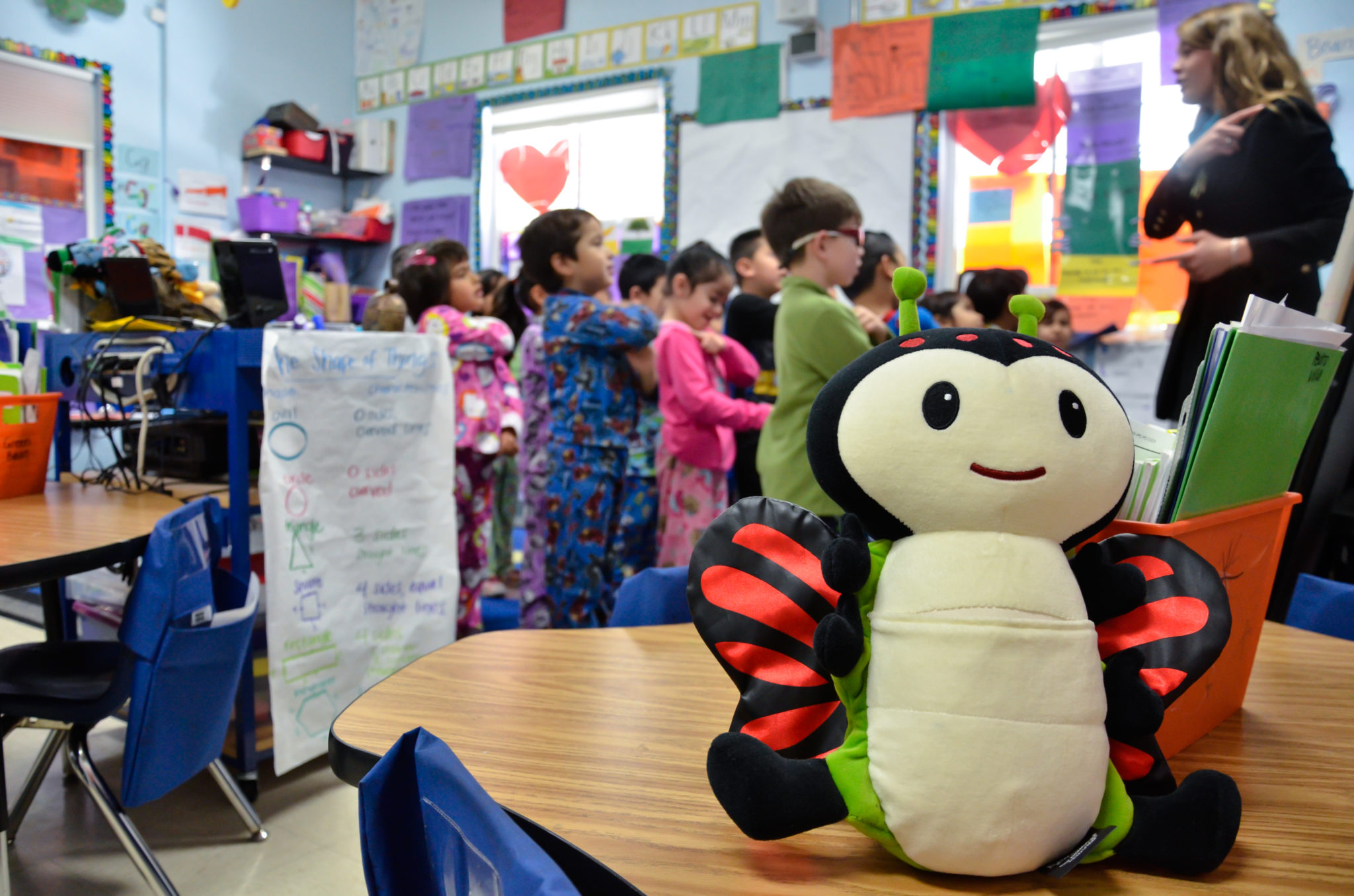
Teaching Character While Building Character
by Claire Wernecke, Second Grade Teacher
For the past few weeks, our second graders have been working on describing characters by matching traits to a character’s actions, speech, thoughts, and feelings. It’s an intense standard to unpack because it involves many levels of learning-comprehending stories, increasing vocabulary around personality traits, comparing characters and finding proof to support their claims in the texts they read.
Throughout this month, my grade level partner, Jessica Bourne, and I have come up with some great resources to teach character description and help our students build their vocabulary. As we’ve gone through this process, we’ve realized how much our students have responded to these lessons by making connections to their own lives.
We’re finding that by analyzing the behavior of literary characters, our students are building their own strong character and personalities. Here are three resources we’ve used to help our students master the standard and become better Rocketeers and citizens in the process:
1. Fables & Folktales
Fables and folktales are one of the best places to start when teaching character traits because of the clear character types and behaviors. We read about crafty Fox and clever Anansi in several stories and our students enjoyed the tricks they played. Some of our students were already familiar with popular fables and it’s exciting to build their repertoire of commonly retold stories and character tropes in literature around the world.
Folktales and fables also have strong moral themes, and often have a direct lesson at the end of the story. A few of our favorite stories and illustrations are found in Eric Carle’s Twelve Tales from Aesop: Retold and Illustrated and Arnold Lobel’s Fables is an amazing book for upper grade levels.
2. Kevin Henkes
 Kevin Henkes’ adorable picture books have extremely relatable characters and hilarious childlike mice who throw tantrums, envy their friends, and face their fears. When reading Lily’s Purple Plastic Purse, my students laughed harder than I’d ever heard at the silly illustrations while I knew they also identified with Lily and her mercurial behavior towards her beloved teacher, Mr. Slinger. Hearing one of my students use the word “unpredictable” to describe Lily was an awesome moment in building vocabulary.
Kevin Henkes’ adorable picture books have extremely relatable characters and hilarious childlike mice who throw tantrums, envy their friends, and face their fears. When reading Lily’s Purple Plastic Purse, my students laughed harder than I’d ever heard at the silly illustrations while I knew they also identified with Lily and her mercurial behavior towards her beloved teacher, Mr. Slinger. Hearing one of my students use the word “unpredictable” to describe Lily was an awesome moment in building vocabulary.
Kevin Henkes’ books are also excellent in teaching character traits because many of his stories are connected through the same set of characters, all of them with as strong a personality as Lily.
3. Kimochis
Our beloved Kimochis characters and the accompanying stories provided an impactful end to our unit on characterization. Lower grade students at Rocketship campuses have been using the Kimochis characters and feelings to teach lessons that support our students’ social and emotional skills all year. Our students immediately fell in love with the Kimochis and have been devoted to practicing kind words and expressing their feelings.
 It was easy for us to use the Kimochis in a more academic realm because each of the characters comes with their own book and personality, supported by vivid details and rich language. Our goal in these lessons was to increase students’ character trait vocabulary, and since the Kimochis were already familiar to our students, they were able to clearly understand more complex traits such as “nurturing” and “persuasive.” Best of all, the Kimochis stories support strong lessons in communication, summarized by their mantra, “It’s okay to be mad, but it’s not okay to be mean.”
It was easy for us to use the Kimochis in a more academic realm because each of the characters comes with their own book and personality, supported by vivid details and rich language. Our goal in these lessons was to increase students’ character trait vocabulary, and since the Kimochis were already familiar to our students, they were able to clearly understand more complex traits such as “nurturing” and “persuasive.” Best of all, the Kimochis stories support strong lessons in communication, summarized by their mantra, “It’s okay to be mad, but it’s not okay to be mean.”
It has been exciting for Jessica and I to see how our students connect academic lessons related to the state standards with the life lessons we also hope to teach them. Through beloved characters and realistic examples, our second graders became proficient at describing characters and improving their own relationships and communication skills.
—
Claire Wernecke is a second grade teacher at Mateo Sheedy Elementary and is in her sixth year of teaching and living in San Jose. She received a BA in American Studies from Stanford University. Claire enjoys tailgating and following Stanford football, dancing, and hiking all over the Bay Area
Published on March 12, 2014
Read more stories about: Most Popular Stories, Personalized Learning.



